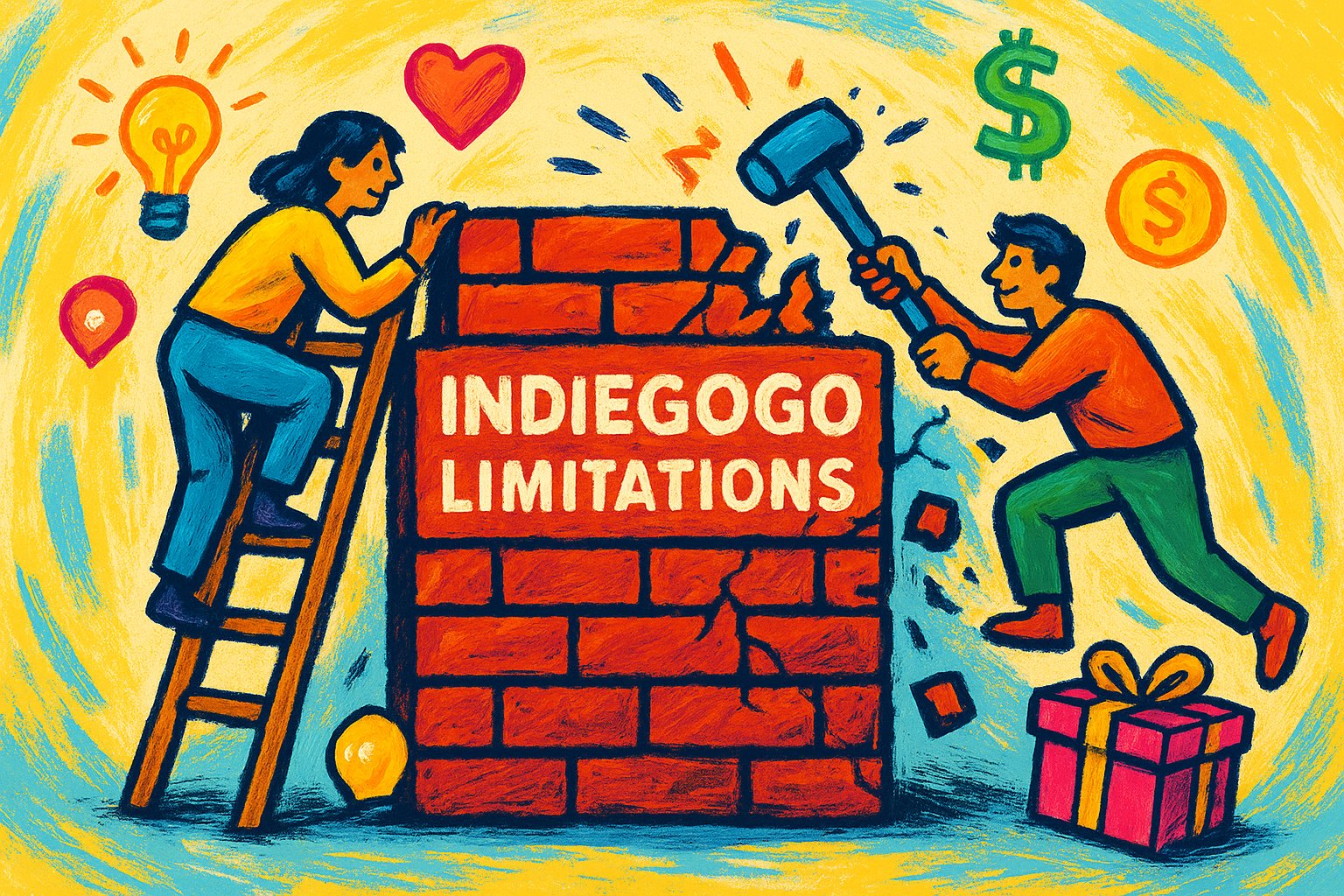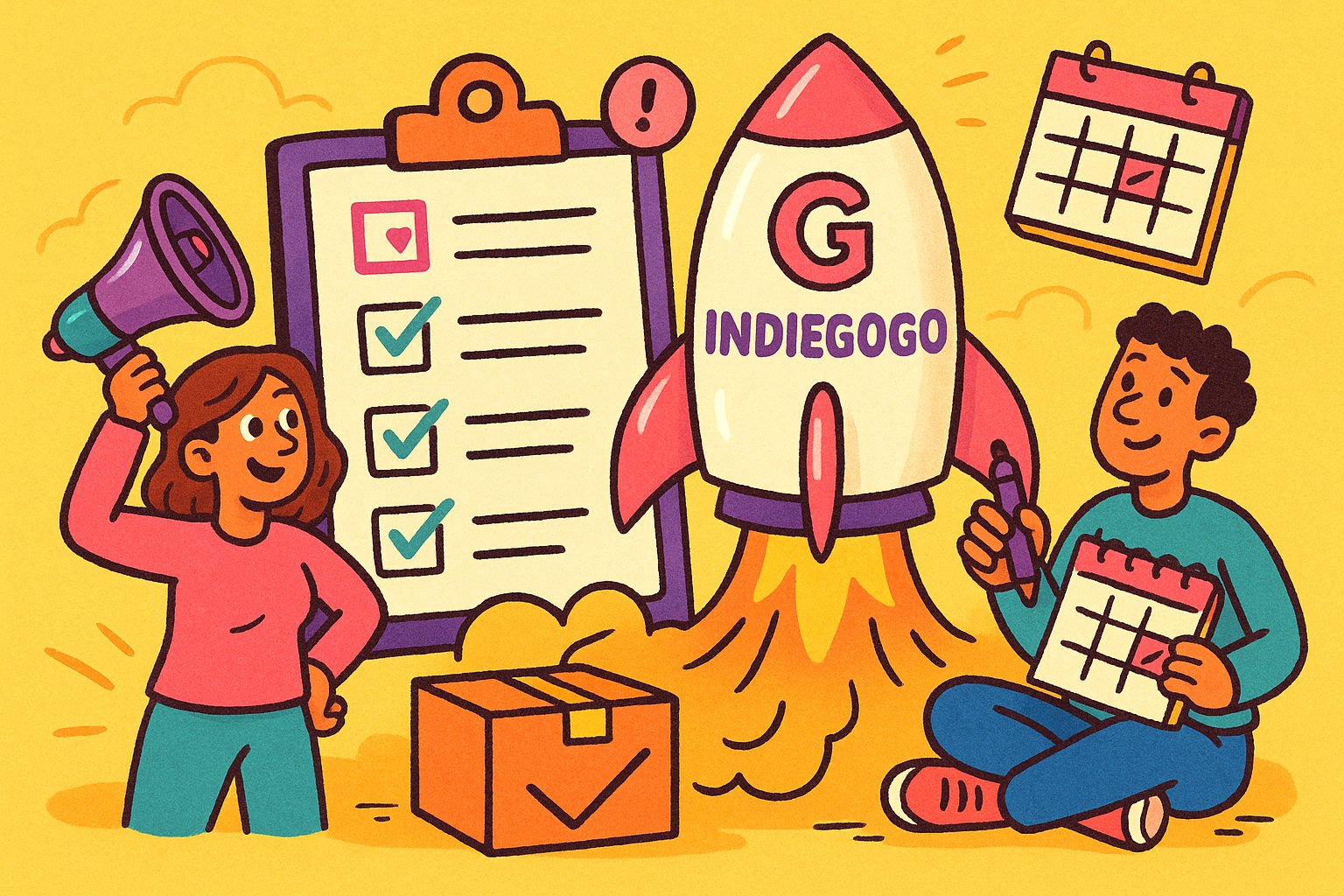Embracing Indiegogo’s Landscape
Launching a project on Indiegogo offers creators an unparalleled opportunity to turn visionary ideas into reality. With millions of backers worldwide and a flexible funding model, Indiegogo has empowered countless entrepreneurs, inventors, and artists to secure the resources they need. Yet, like any platform, Indiegogo comes with its share of constraints that can challenge even the most seasoned campaigners. From fee structures and discoverability hurdles to logistical complexities and marketing demands, understanding these limitations—and knowing how to navigate around them—becomes the difference between a lukewarm campaign and a resounding success.
Before diving into strategies for overcoming these obstacles, it’s crucial to appreciate why they exist. Indiegogo’s fee structure, for example, balances providing a robust global infrastructure—secure payment processing, customer support, and compliance measures—against maintaining affordability for creators. Discoverability challenges arise because a flood of new campaigns competes for attention, requiring each project to craft a unique narrative that cuts through the noise. Meanwhile, international shipping complexities stem from Indiegogo’s global reach, demanding creators address customs, duties, and regulatory compliance across multiple regions.
At first glance, these hurdles might appear daunting; however, acknowledging them early in your campaign planning allows you to build proactive solutions rather than reactive patches. By dissecting each limitation and pairing it with practical workarounds, you transform potential roadblocks into strategic advantages. This deep understanding not only prepares you for challenges but also sharpens your overall campaign strategy—ensuring that you maximize Indiegogo’s strengths while minimizing its weaknesses. As we explore each key platform constraint, keep in mind that every limitation presents an opportunity for creativity, innovation, and ultimately, campaign growth.
Demystifying Transaction Fees and Funding Models
One of the most common concerns among Indiegogo backers and creators revolves around transaction fees. By default, Indiegogo charges a 5 percent platform fee on funds raised, in addition to payment processing fees—typically around 3 percent plus a small fixed cost per transaction. These combined fees can feel steep, especially for projects operating on razor-thin margins. On top of that, Indiegogo’s “Fixed Funding” model requires campaigns to reach their goal threshold to receive any funds, whereas the “Flexible Funding” option grants creators access to money even if the final target isn’t met—albeit often at higher overall costs.
To navigate these financial considerations, start by factoring all fees into your initial budget. Instead of viewing fees as an afterthought, integrate them into your itemized cost breakdown for production, shipping, packaging, and marketing. If you elect a Fixed Funding model, set a realistic goal that covers your minimum viable production costs plus anticipated fees; this avoids the disappointment of raising funds without resources to proceed. If Flexible Funding better suits your needs—particularly when you have proven sales channels outside Indiegogo—consider how to allocate a portion of collected funds to fulfill backer rewards even if you fall short of your target. By treating fees as part of your campaign’s fundamental economics, you remain in control of financial outcomes rather than discovering hidden costs at the eleventh hour.
Navigating Discoverability in a Crowded Marketplace
With thousands of live campaigns at any given moment, standing out on Indiegogo can be a formidable challenge. Simply uploading a well-produced video and polished campaign page does not guarantee visibility. Indiegogo’s discovery algorithms reward early momentum—campaigns that gain backers quickly and receive continual engagement are more likely to appear in “Featured” and “Popular” sections. However, many creators struggle to generate that initial buzz, especially without a pre-existing audience or compelling media coverage.
To crack this code, focus on building momentum long before your official launch date. Cultivate an email list of potential backers through an attractive pre-launch landing page, offering exclusive previews or behind-the-scenes looks at your prototype. Engage with niche communities—Reddit forums or specialized Facebook groups—where your target audience already gathers, and solicit feedback to refine your pitch. On launch day, coordinate an announcement blitz: send personalized emails, activate social media posts with tailored visuals, and encourage friends or micro-influencers to pledge immediately. Each early pledge and social share signals Indiegogo’s algorithm that your project warrants broader exposure. By seeding momentum strategically, you transform discoverability from a daunting limitation into an orchestrated advantage.
Managing International Shipping Complexities
One of Indiegogo’s greatest strengths is its global reach—campaigns can attract backers from Europe, Asia, Australia, and beyond. Yet, international shipping introduces a web of customs regulations, import duties, and unpredictable delivery timelines. Many creators underestimate these complexities, promising “free worldwide shipping” without fully accounting for diverse carrier rates and localized restrictions. As a result, backers may be surprised by customs fees upon delivery, or creators may find themselves absorbing unanticipated postage expenses.
The solution lies in meticulous logistical planning. First, segment shipping options by region: provide tiered shipping fees for North America, Europe, Asia, and other territories based on real-time carrier quotes. Work with fulfillment partners or third-party logistics providers experienced in crowdfunding to negotiate volume discounts and manage customs documentation—ensuring that all packages include proper HS codes and commercial invoices. Clearly outline shipping timelines in your campaign page, specifying that orders to certain countries may require additional processing time due to customs clearance. To maintain transparency, create a “Shipping FAQ” section that details potential import duties and advises backers to research local policies. By proactively addressing international shipping hurdles, you demonstrate professionalism and reassure backers that their contributions won’t be trapped in bureaucratic limbo.
Overcoming Marketing and Outreach Constraints
Indiegogo provides basic promotional tools—embedded social sharing buttons, analytics dashboards, and occasional platform-wide email features for high-performing campaigns—but these alone rarely suffice. Creators who rely solely on Indiegogo’s infrastructure often fail to generate the conversion rates needed for success. Marketing limitations become most apparent when creators have limited budgets, small followings, or no relationships with key media outlets. Without an integrated outreach plan, a campaign’s potential may remain trapped behind a lack of awareness.
To surmount this, develop a multi-channel marketing strategy that blends organic tactics with targeted paid advertising. Prioritize cultivating a strong presence on social media platforms where your audience congregates—Instagram for visual storytelling, LinkedIn for B2B or professional devices, and Twitter for tech-savvy communities. Schedule a series of teaser posts, countdown graphics, and short video clips that build anticipation in the weeks leading up to launch. Complement these organic efforts with a modest budget for Facebook or Google Ads, precisely targeting demographics that match your ideal backer profile. If traditional press coverage is out of reach, leverage influencer marketing by partnering with micro-influencers who have engaged, niche-following audiences. Even a few authentic product reviews or unboxing videos can translate into meaningful pledge inflows. By integrating multiple outreach channels, you amplify your campaign’s reach and avoid the trap of relying solely on Indiegogo’s limited promotional mechanisms.
Leveraging Platform Tools and Third-Party Integrations
While Indiegogo may lack certain advanced features—such as built-in email automation or advanced A/B testing—third-party tools can bridge these gaps. For instance, integrating Mailchimp or ConvertKit with your pre-launch landing page allows you to automate segmented email sequences, nurturing subscribers with tailored messaging and maintaining enthusiasm until launch day. Similarly, linking your campaign to backer-management platforms like BackerKit or CrowdOx streamlines post-campaign surveys and helps you collect shipping information efficiently, reducing manual data entry errors and late-stage confusion.
Analytics are another area where Indiegogo’s native dashboard can feel lacking. To gain deeper insights into traffic sources, conversion funnels, and user behavior, incorporate Google Analytics with UTM parameters on all external links driving to your campaign page. This level of detail enables you to pinpoint which marketing channels are performing best, informing real-time budget reallocation and messaging tweaks. By blending Indiegogo’s core features with specialized tools—email platforms, backer managers, analytics suites—you fortify your campaign’s infrastructure, transforming platform constraints into catalysts for technological innovation.
Building Community Beyond the Platform
A common mistake among Indiegogo creators is treating the platform as a self-contained ecosystem. Once the campaign concludes, many projects vanish into obscurity, losing touch with backers and missing opportunities for future growth. To transcend this limitation, focus on cultivating a community that extends beyond Indiegogo’s confines. Launch a branded forum or Discord server where backers can connect, share user-generated content, and provide feedback on prototype iterations. Regularly update a dedicated blog on your website, detailing production progress, behind-the-scenes stories, and upcoming milestones—even after the campaign ends. This continuity keeps backers engaged and positions your project for future product launches or additional crowdfunding rounds.
Encourage backers to become co-creators by soliciting their input on new features or design variations. When they see that their voices influence product decisions, they feel a heightened sense of ownership, driving organic word-of-mouth and potential referrals. Additionally, create a post-campaign email newsletter—not merely a transactional shipping update, but a value-driven communication channel that shares industry insights, early discounts on future products, or invitations to exclusive events. By viewing Indiegogo as a launchpad rather than a finish line, you convert one-time backers into lifelong brand advocates who will champion your next crowdfunding venture.
Turning Limitations into Opportunities
Every platform constraint—from fees and discoverability to shipping hurdles and marketing gaps—holds within it the seed of an opportunity. Instead of perceiving Indiegogo’s limitations as fixed roadblocks, view them as catalysts for strategic ingenuity. Use fee awareness to foster disciplined budgeting; embrace discoverability challenges to sharpen pre-launch marketing tactics; leverage shipping complexities to establish robust fulfillment partnerships; transform marketing constraints into multichannel outreach blueprints; and transcend platform tool gaps by integrating best-of-breed third-party solutions. By adopting this proactive mindset, your campaign not only endures Indiegogo’s inherent constraints but thrives within them.
Ultimately, overcoming Indiegogo’s limitations demands preparation, adaptability, and a community-first ethos. When creators dedicate time to understanding the platform’s fee structure, algorithmic mechanics, logistical demands, and promotional boundaries—and when they counter each constraint with calculated, proactive strategies—they unlock the full potential of Indiegogo’s global audience. Rather than being deterred, successful campaigners embrace these challenges as opportunities to refine their vision, build trust, and foster enduring backer relationships that extend far beyond a single funding round. In doing so, they transform every Indiegogo limitation into a stepping stone for lasting innovation and sustained crowdfunding triumph.




